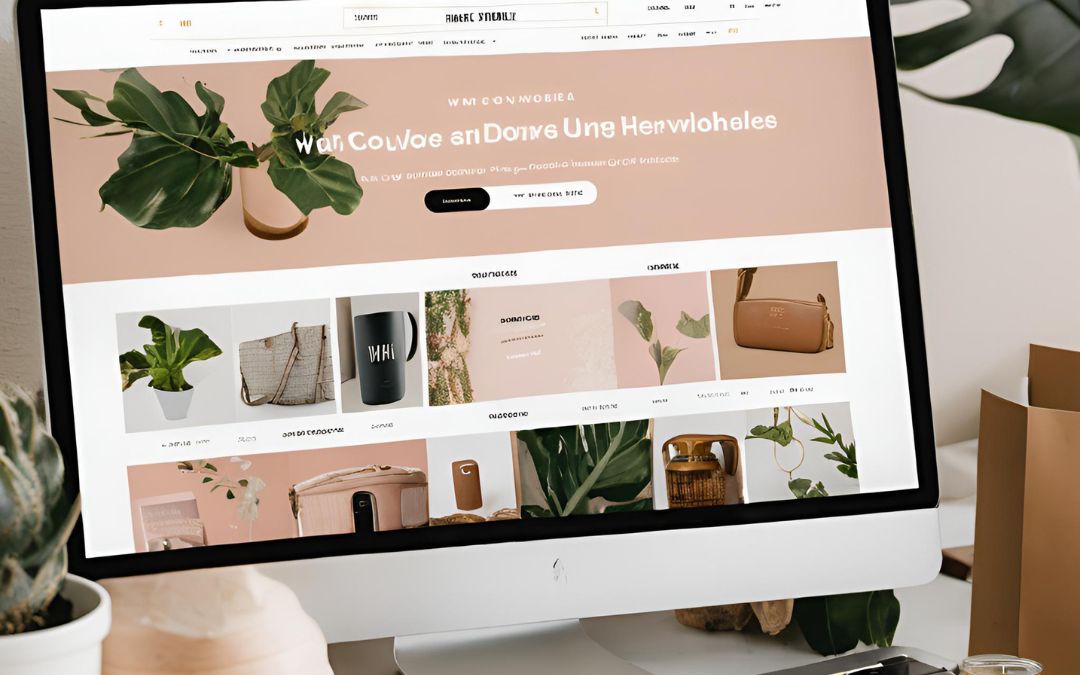In the digital age, e-commerce has become a cornerstone of global retail. Businesses are increasingly turning to custom e-commerce web design to differentiate themselves in a crowded marketplace. A bespoke e-commerce website is not just about aesthetics; it’s about creating an engaging, user-friendly experience that drives conversions and builds brand loyalty. Here, we delve into the myriad ways custom e-commerce web design can transform your online business.
Understanding the Importance of Custom E-Commerce Web Design
Contents
A custom e-commerce web design is tailored to meet the specific needs and goals of your business. Unlike generic templates, a custom design provides a unique identity, setting you apart from competitors. It ensures that every element of your website, from layout to functionality, aligns with your brand ethos and enhances user experience.
Brand Identity and Recognition
One of the most significant advantages of custom e-commerce web design is the ability to create a strong brand identity. Your website is often the first interaction a customer has with your brand. A unique, well-designed site leaves a lasting impression and helps in building brand recognition. Custom design allows for consistent branding across all pages, reinforcing your brand’s message and values.
Enhanced User Experience
User experience (UX) is paramount in e-commerce. A custom design enables you to create an intuitive navigation system, streamlined checkout processes, and engaging content layouts that keep users on your site longer. Every aspect of the design can be optimized to provide a seamless shopping experience, reducing bounce rates and increasing conversion rates.
Scalability and Flexibility
As your business grows, your website needs to evolve. A custom e-commerce website is built with scalability in mind. It can be easily updated with new features, products, and services without compromising performance. This flexibility ensures that your site can adapt to changing market trends and customer expectations.

Custom E-Commerce Web Design
Key Elements of Effective Custom E-Commerce Web Design
Creating a high-performing custom e-commerce website involves several critical components. Each element plays a vital role in enhancing functionality, improving user experience, and driving sales.
Responsive Design
With the increasing use of mobile devices for online shopping, having a responsive design is non-negotiable. A responsive website automatically adjusts to different screen sizes, providing an optimal viewing experience across all devices. This not only improves user experience but also boosts your site’s SEO ranking, as search engines favor mobile-friendly sites.
Fast Loading Speeds
In e-commerce, every second counts. Slow loading times can lead to high bounce rates and lost sales. A custom e-commerce web design prioritizes speed by optimizing images, reducing server response times, and implementing efficient coding practices. This ensures that your site loads quickly, keeping users engaged and reducing the likelihood of cart abandonment.
Secure Payment Processing
Security is a critical concern for online shoppers. A custom e-commerce site allows for the integration of robust security measures, including SSL certificates, secure payment gateways, and encryption protocols. These features protect customer data and build trust, encouraging repeat business and customer loyalty.
SEO-Friendly Architecture
A well-designed e-commerce site is built with SEO in mind. This includes clean, semantic coding, optimized meta tags, and structured data. Custom design allows for the strategic placement of keywords and the creation of unique content that improves search engine visibility. This ensures that your site ranks higher on search engine results pages (SERPs), driving more organic traffic to your store.
Custom E-Commerce Design Trends to Watch
Staying ahead of design trends can give your e-commerce site a competitive edge. Here are some current trends that can enhance your custom e-commerce web design:
Minimalist Design
Minimalist design focuses on simplicity and functionality. It eliminates clutter, allowing users to focus on the products and content that matter. This design approach uses ample white space, clean lines, and a limited color palette to create a modern, sophisticated look.
Micro-Interactions
Micro-interactions are small animations or responses that occur when users interact with your site. These can include hover effects, button animations, and loading indicators. Micro-interactions enhance user engagement by providing immediate feedback, making the browsing experience more enjoyable.
Personalization
Personalization involves tailoring the shopping experience to individual users based on their preferences and behaviors. This can include personalized product recommendations, targeted content, and customized email campaigns. Personalization increases customer satisfaction and can significantly boost sales.
Augmented Reality (AR)
AR is transforming e-commerce by allowing customers to visualize products in their real environment before making a purchase. This technology can be particularly effective for fashion, furniture, and home decor industries, providing an immersive shopping experience that reduces return rates and increases customer satisfaction.
Conclusion: Investing in Custom E-Commerce Web Design
Investing in custom e-commerce web design is a strategic move that can yield substantial returns. It enhances brand identity, improves user experience, and provides the flexibility to scale as your business grows. By incorporating the latest design trends and focusing on key elements such as responsiveness, speed, security, and SEO, you can create a powerful online presence that stands out in a competitive market.
A custom e-commerce website is more than just a sales platform; it is a reflection of your brand’s values and a crucial touchpoint for customer interaction. By prioritizing custom design, you ensure that your e-commerce site not only meets but exceeds customer expectations, driving loyalty and long-term success.

